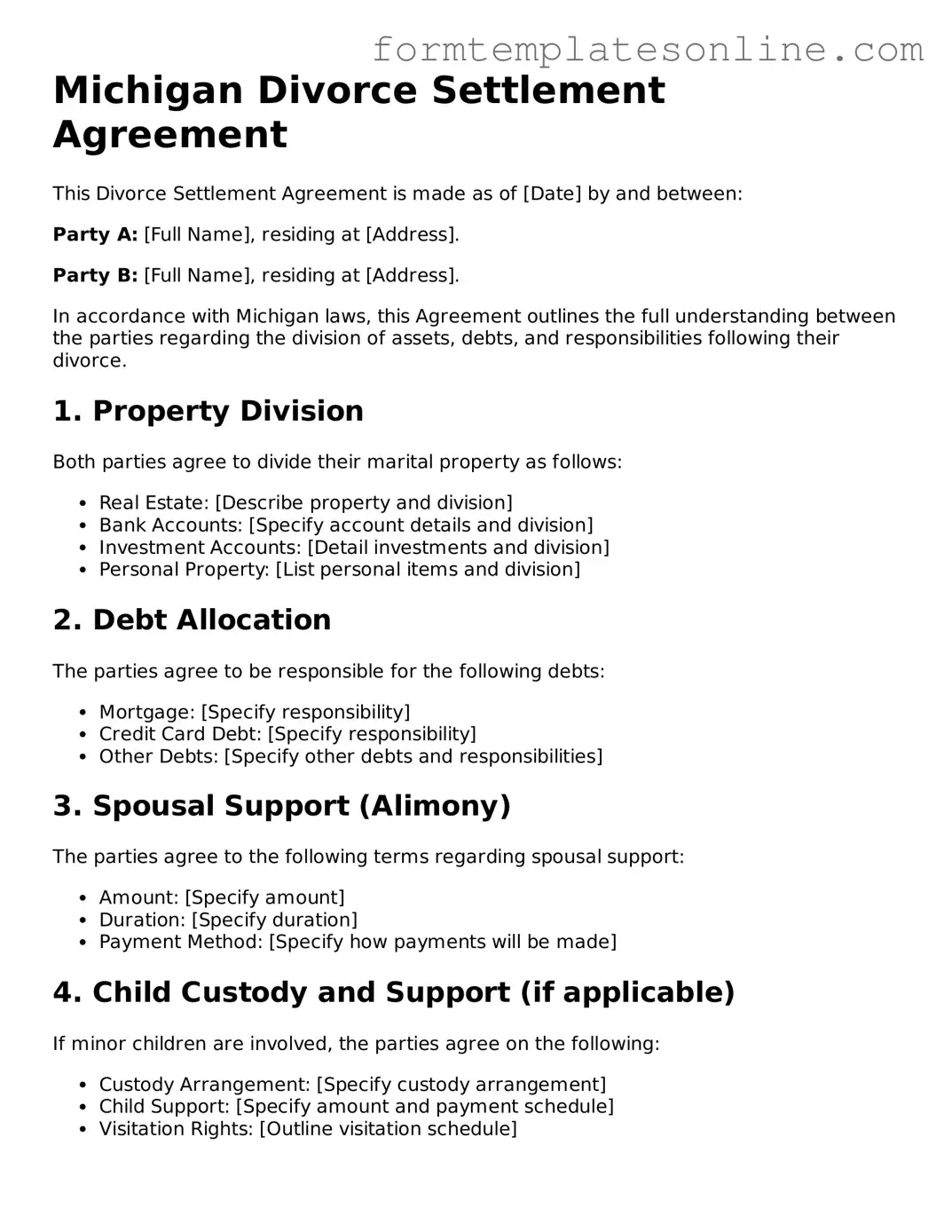Michigan Divorce Settlement Agreement
This Divorce Settlement Agreement is made as of [Date] by and between:
Party A: [Full Name], residing at [Address].
Party B: [Full Name], residing at [Address].
In accordance with Michigan laws, this Agreement outlines the full understanding between the parties regarding the division of assets, debts, and responsibilities following their divorce.
1. Property Division
Both parties agree to divide their marital property as follows:
- Real Estate: [Describe property and division]
- Bank Accounts: [Specify account details and division]
- Investment Accounts: [Detail investments and division]
- Personal Property: [List personal items and division]
2. Debt Allocation
The parties agree to be responsible for the following debts:
- Mortgage: [Specify responsibility]
- Credit Card Debt: [Specify responsibility]
- Other Debts: [Specify other debts and responsibilities]
3. Spousal Support (Alimony)
The parties agree to the following terms regarding spousal support:
- Amount: [Specify amount]
- Duration: [Specify duration]
- Payment Method: [Specify how payments will be made]
4. Child Custody and Support (if applicable)
If minor children are involved, the parties agree on the following:
- Custody Arrangement: [Specify custody arrangement]
- Child Support: [Specify amount and payment schedule]
- Visitation Rights: [Outline visitation schedule]
5. Miscellaneous Provisions
Additional terms that the parties agree to include:
- Dispute Resolution: [Outline method of resolving disputes]
- Modification: [Specify how modifications can be made to this agreement]
- Governing Law: This Agreement shall be governed by the laws of the State of Michigan.
By signing below, both parties acknowledge that they have read and understood this Agreement and agree to its terms.
Party A Signature: _______________________ Date: ___________
Party B Signature: _______________________ Date: ___________
Witness Signature: _______________________ Date: ___________
